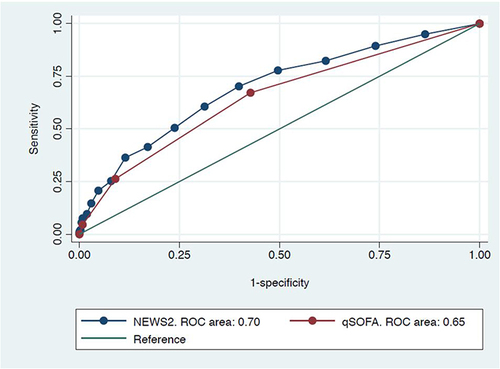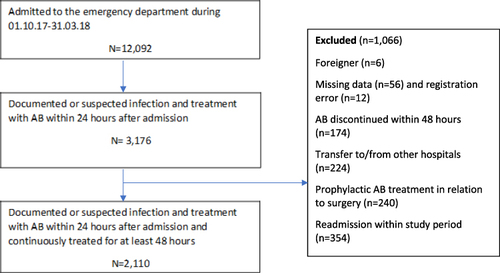Figures & data
Table 1 National Early Warning Score (NEWS2)
Table 2 Patient Characteristics According to the Composite Endpoint of In-Hospital Mortality or Transfer to the Intensive Care Unit
Table 3 Odds Ratio for the Composite Endpoint of In-Hospital Mortality or Transfer to the Intensive Care Unit According to Different Sepsis Scores
Table 4 Prognostic Accuracy of Different Sepsis Scores for a Composite Endpoint of In-Hospital Mortality or Transfer to Intensive Care Unit Using Baseline Clinical Values or Worst Clinical Values Within First Four Hours
Table 5 Unadjusted and Adjusted Area Under Receiver Operating Characteristic Curves in Predicting the Composite Endpoint of In-Hospital Mortality or Transfer to Intensive Care Unit Using Baseline Clinical Values or Worst Clinical Values Within First Four Hours
Figure 2 The area under the receiver operating characteristics (AUROC) curves.

Table 6 Unadjusted and Adjusted Odds Ratios for the Composite Endpoint of In-Hospital Mortality or Transfer to the ICU in Patients with Suspected Sepsis (NEWS2 ≥5) Using Baseline Clinical Values or Worst Clinical Values Within First Four Hours to Identify Patients with Suspected Sepsis

